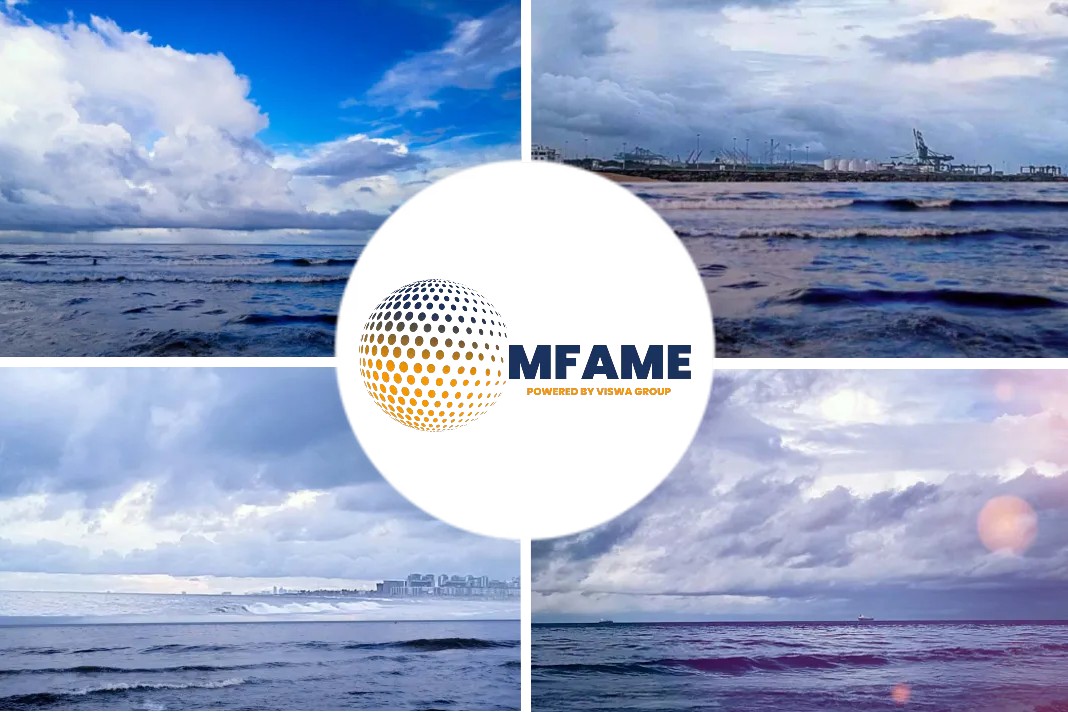Statistics released from various trusted sources have indicated that major cargo fire makes headlines in every 60 days. The timeline from putting out the fire to subsequent investigations is a tedious process.
Explosion onboard ships
There have been numerous instances of explosions onboard shipping vessels and fire accidents involving containers. As the size of the vessels increase, the risk of explosion and subsequent fire also increases. Despite certain regulatory and technical advances, there is little doubt that the capability to respond to a cargo-related fire at sea has not progressed in proportion to ship capacities and the variety of commodities being carried.
The report said, “There is little doubt that the capability to respond to a cargo-related fire at sea has not progressed in proportion to ship capacities and the variety of commodities being carried”.
Dealing with an incident at sea
If a fire occurs at sea, the crew is trained to control a container fire incident, be it in the hold or on deck. To help deal with a fire in a hold, a carbon dioxide (CO2) system will normally be installed in ships that carry dangerous goods. The gas released from a CO2 system can displace the oxygen in the hold and smother the fire. However, for CO2 to be effective, the hold must be sealed to retain the gas and prevent oxygen ingress. Following an explosion in a hold, the structure may have been damaged or hatch cover pontoons displaced, making the retention of CO2 impossible. Even so, hatch cover pontoons are not designed to be gas-tight, only weathertight, and thus it is likely that the CO2 will escape over time.
Furthermore, CO2 has virtually no cooling effect on combustion; if oxygen re-enters the hold after the CO2 has been deployed, the fire may redevelop. In addition, a CO2 system will not be effective in controlling fire incidents involving hazardous substances that produce oxygen during decomposition.
If an incident has occurred in a container stowed on deck, then inevitably a CO2 system is not viable for firefighting. In this case, water will be the only option available to the crew as the first line of defense. Although water may be beneficial as boundary cooling and assist in minimizing fire spread, it is unlikely to extinguish a fire inside a container in the short term – and the risk of cargo misdeclaration means that water firefighting carries risk and generally may not be appropriate.
Seek expert advice
The crew can prevent mishap by seeking expert advice during the initial hours of the incident. The expert will be in a position to provide as much information as possible, including the location of the fire, the extent and description of the incident and, as a minimum, a copy of the cargo manifest – particularly the location of containers declared as carrying dangerous cargoes.
If the fire is in a hold, flooding of the hold with water may be considered. This will require flooding to above the level of the containers involved and brings many additional problems. There is potential that more damage results from the water that may have occurred from the fire. As the packaging of various cargoes becomes compromised by water or explosion or fire, it is likely that flooding the hold will produce a ‘chemical soup’ with contaminants from a multitude of cargoes. This can result in toxic substances or gases produced by mixing or decomposition (rotting) of the various cargoes.
In addition to the potential for toxic substances and gases to be produced by the ‘chemical soup’, other cargoes are quite likely to be affected by heating or burning, also changing their properties and hazards.
Fire investigation
Once an explosion or fire has occurred, an investigation into the cause will normally be required. This can be a very complex and protracted operation in the larger incidents. Most investigations though will follow a basic format. The starting point is often witnessed or electronic evidence. This will involve gathering accounts of the events from the crew, including ‘where, when and what’. As a lot of crew members now own mobile phones, photographs or videos of the early stages of an event are sometimes available.
Detection systems can also provide valuable information, such as where the smoke or fire was first detected. If the detection system is a gas extraction system (with monitoring/detection carried out remotely) samples or residues can be obtained from the inside of the extraction pipework. Engine room alarm logs can provide indications of other system failures, such as the electricity supply to hold lighting. All this information may assist in pinpointing or narrowing down the area where the fire event started or explosion initiated.
Once the available witness evidence is collected, an examination of the physical evidence will be carried out, including damage to the ship structure and containers. This may provide directional indicators of the blast and or fire movement and intensity. During the physical examination, samples will be taken for laboratory analysis, the results of which may assist in identifying the cause of the event. This, however, can be very complex, often involving a mix of substances, including both the original cargoes and the decomposition substances created in the incident.
Given the potential complexity and the extent of a large explosion on a container ship followed by a prolonged fire, a multi-discipline team may be required. This may include:
- Fire investigators
- Cargo scientists
- Metallurgists
- Mariners
- Marine engineers
- Naval architects
Inevitably, due to the implications for the safety of the crew, the ship, and the environment, prevention is much better than cure. Much effort is underway internationally among the different stakeholders to prevent such incidents. This ranges from looking more closely at all elements of the cargo shipping process as well as seeking the strengthening of ship-board processes.
Did you subscribe for our daily newsletter?
It’s Free! Click here to Subscribe!
Source: TT Club



















